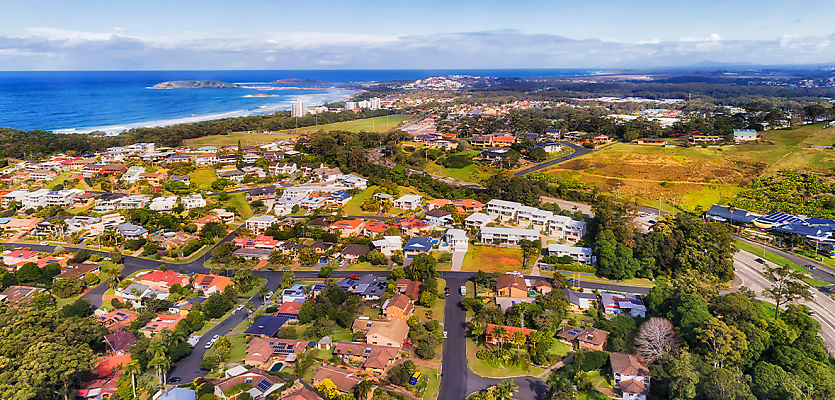Regional dwelling values across the country have been soaring at their fastest pace in over three years, with Western Australia setting the benchmark.
New data showed that regional dwelling values have risen 2.4 per cent over the three months to the end of October, marking the highest rate of growth since 2022.
Cotality’s November Regional Market Update, which analysed Australia’s largest 50 non-capital city significant urban areas (SUAs), found a renewed uplift in growth across the regions.
Due to affordability and supply constraints driving competition in the capitals, buyers have been flocking to the regions seeking value and price points, with regional Western Australia (WA) leading the country’s growth.
Cotality Australia economist Kaytlin Ezzy said the state’s far south-west market dominated many of the key indicators, although momentum hadn’t been limited to just one region or price bracket.
She said that dwelling growth had been emerging across inland centres, coastal regions, and mining-adjacent areas, but it was driven by areas with affordable housing options and tightly held stock.
Kalgoorlie-Boulder, northeast of Perth, recorded the highest growth of the state’s regions, with dwelling values rising 8.1 per cent value growth over the three months to October.
Geraldton, in the state’s mid-west region, saw a 7.4 per cent value increase, while Albany’s dwelling values rose by 6.2 per cent over the quarter.
Albany also performed strongly in the annual results, recording a 23.3 per cent rise, the largest increase among the top 50 regional SUAs.
According to Jeremy Stewart, managing director of Merrifield Real Estate in Albany, the market has been tight, with low supply and high demand.
“When there is supply hitting the market, there are either buyers that have already purchased it from databases or there's a lot of interest across all sectors,” he told REB.
“Residential housing, anything sub $700,000, it would be no surprise to get anywhere between 30 to 50 enquiries in a quick period.”
He said that dwellings in the $700,000-900,000 bracket were also attracting strong interest, especially in the suburban market.
“Probably 65 per cent of the demand across the market is coming from the outer Albany region – that's made up predominantly of Perth people, relocating investors from the east coast.”
Albany also recorded the shortest median time on market out of all regional areas across the country, with 11 days and a median vendor discount rate of 2.0 per cent over the year.
Of the 17 nationwide regions that recorded double-digit growth, eight other markets showed median selling times under 20 days, including WA’s Busselton at 14 days.
Comparatively, regional NSW lagged, with the Bowral-Mittagong region taking all three titles: lowest annual growth, longest days on market, and highest vendor discounts across all 50 regions.
The market, located in the NSW Southern Highlands, recorded a 1.2 per cent fall in annual dwelling values, with a 77-day median market time and vendor's discounting rate at 5.4 per cent.
Bowral-Mittagong was also one of only four NSW regions to record a quarterly fall, dropping 1.1 per cent alongside St Georges Basin –Sanctuary Point (-1.2 per cent), Batemans Bay (-1.1 per cent), and Bathurst (-0.4 per cent).
Ezzy said that despite being a favourite among COVID-19-era city leavers, the NSW Southern Highlands had lagged behind since peaking at the start of the rate tightening cycle.
She said the region’s lack of affordability had been a factor in the decline, continuing to record the highest median value among the top 50 regions, at $1,159,226.
According to Ezzy, the regional quarterly price surge can be attributed to high demand, low supply, renewed optimism and the introduction of the First Home Guarantee scheme.
“Just like the capitals, buyers have become increasingly active across regional areas, with improved borrowing capacity coming up against constrained stock, helping to push values higher,” she said.
“As they have done for the past few years, Regional Western Australia and pockets of inland Queensland continue to be some of the best performing areas, but we’re also seeing renewed growth in some that had been flat since 2022,” Ezzy concluded.
You might also like: [Brisbane property market update, October 2025]
ABOUT THE AUTHOR








You are not authorised to post comments.
Comments will undergo moderation before they get published.